As featured in:






As featured in:







Power (Swim)Suit
When 42-year-old Saumya Sharma, a dentist who now lives in London, saw a woman on the beach in Mumbai’s Juhu, idly sitting in a swimsuit in the 90s, she was surprised to say the least. She grew up with summers that were spent at the community swimming pool and evenings with walks on the beach. But she had never, not once, seen a woman wearing a bikini. For Saumya, like many of us, swimwear meant wearing a pair of tights and a Speedo on top of it.
“I remember we went to Water Kingdom in the 90s and I saw my mother in a pair of tights and a loose t-shirt. She wore jeans when we travelled, but I had never seen her dressed like this,” she tells us.
The swimsuit, Sharmila Tagore killing it aside, has posed a moral dilemma for the Indian woman for decades now. Clearly, in India, modesty is defined by one’s gender, whether a woman wants to take a dip in the pool or fully clad when in other public spaces. From the Raja Ravi Varma paintings that showed sari-clad women in rivers to Pamela Anderson in Baywatch, the journey has been a long and fascinating one. In fact, it wasn’t till the 2000s that you’d see Indian women in swimsuits at all, especially in the country. The hotel pools, beaches, and resorts all saw (at most) women in pairs of shorts usually with a sarong as an accompaniment.
A cultural shift
The movement seems to have gained momentum with the advent of liberation movements around the world. As India stepped into the larger movement in the 1970s, as did the conversation around demand for the choice of wearing what one pleases. It took us close to 30 years, however, to see the change in action. And you can see this reflected on screen too. Mallika Sherawat and Bipasha Basu’s “bold” choices from the early aughts seem to have turned into just something Alia Bhatt and Deepika Padukone do in the movies now. Is it because of the shift in the movement or swimsuits being more widely accepted by the common folk? Maybe it’s a combination of both.
Preeta Sukhtankar, the founder of lifestyle brand The Label Life, has had an interesting relationship with the swimsuit. “It only started in my thirties that I may have worn a two piece, but prior to that even, as a kid I don't remember ever wearing one. It was always considered to be a big thing, right? I don’t even remember being in college like I am now in my forties, walking around in a swimsuit without wearing either a sarong or a cover up. In the early 2000s, wearing a swimsuit meant you were bold. That is not the case now. I see the stark difference in my daughter today.”
More than skin deep
Today, the swimsuit is being embraced by the average Indian. While some still prefer the shorts-and-tee combo, most others invest in swimsuits. While there is a wide variety of swimwear available in India now, it is not far-fetched to wonder if the variety is also size inclusive.
“It was 2017,” 35-year-old Leena Sahni from New Delhi tells us, “when I was on my bachelorette trip in Sri Lanka. I saw an Indian woman on the beach wearing a bikini and I remember thinking that it was the first time I had seen a plus size woman in one.” Leena isn’t alone in her observation. While more and more Indian women turned to resort and swimwear at the turn of the century, the jury is still out on the inclusion of other sizes.
In the ever-evolving landscape of fashion, only a few garments embody societal standards and cultural shifts as poignantly as swimwear. Once the bastion of the thin and the toned, the swimsuit has undergone a remarkable metamorphosis, mirroring broader conversations around body positivity and inclusivity.
Today, several brands have all made it their brand on a mission to rewrite the narrative of swimwear fashion. But, while there are some winners like Tailor & Circus, Marks and Spencer, and H&M, many others just aren’t cutting it. Mumbai-based model and chef Alefiya Jane tells us, “These swimsuits aren’t made with plus-size women in mind because they don’t provide the three main things we need from them — support, coverage, and fit. They are supposed to hold our big bodies up and fit seamlessly. But often, they are either too big or too small. The upper body wear is not always proportional to the bottoms. And if they are, the arm hole or the thigh hole doesn’t fit with the rest of the garment.”
Most brands making resort wear in India are still making them for a Western body standard. If you need more sizes, you have to spend between INR2,500-8,000 for most starting ranges. An average swimsuit in the non-plus size section starts at INR350. So while we do have more options now, they come at a price.
There is, however, one more problem. Thirty-two-year-old Debiparna, who is a writer based in Kolkata, tells us, “There aren’t many options in terms of styles when it comes to plus-sized swimwear. It’s always the same. And there aren’t enough options for the kinds of prints you can choose either. It's like a monoculture of plus-sized style, which is not the case for non-plus-sized clothing.”
Jane agrees when she says, “They expect me to spend money on an ill-fitted piece of clothing that does not even match my aesthetic. Simply put…most options are ugly and flimsy.”
The journey towards body positivity has been an arduous one, which is why it’s important to look beyond what swimwear means on a surface level. Debiparna adds, “I am a size 18, that’s an XL for most brands. But sometimes, it can go up to 5XL. I am the same size, but the brands have different parameters. I used to be a size 22. So the 5XL stings, even though I know it isn’t about me or that there is nothing wrong with being a bigger woman.” This is also true for many brands that advertise having size-inclusive clothing, but only go up to a UK12. That’s a Large, and not very size-inclusive at all.
“I started wearing swimsuits in my twenties and thirties, I think. And I almost never bought them in India. Then later, of course, at The Label Life we made sure that we made swimsuits that were accessible for all. I wear a size 12 or 14, so I have always wanted accessibility. I do wish it was better in India, though,” Preeta tells us.
When the Canadian lingerie brand la Vie en Rose launched in India last year, François Roberge, the president and CEO of the brand, had told Mint, “I think India would be one of the biggest retail markets in 10 years,” And he is right. The market growth between 2023-2027 is estimated to be a whopping USD 28.94 billion. More than half of that number consists of female consumers. On top of that, the swimwear market in India is projected to grow by 3.50% (2024-2028), resulting in a market volume of USD 2.49 billion by 2028. So, it is safe to say that there is much to gain from having more inclusive sizes. So why do we still not have them? Is it because of the stigma? Or perhaps the assumption that plus-size folks won’t be looking to wear swimsuits? Or something else entirely?
All this and there is also the idea that most men don’t have swimwear options at all. “I can either wear really big boxers to the pool or simply be okay with a Decathlon speedo, which is usually super tight and not made for someone my size,” says 27-year-old Karan, who requested to be quoted anonymously.
This is also true for swimwear not being handicap-friendly or even age-friendly. Preeta tells us, “I think there needs to be a lot of room for women with age. Women in their thirties and forties are the ones with a lot of spending power. So l hope that people sort of give us that privilege and create clothes for us. Our midriffs, our very worked-out bodies are not the same as those younger than us.”
Thankfully, an emerging subculture seems to be gaining ground. In recent years, there has been a significant shift in the swimwear industry towards inclusivity and body positivity, with homegrown brands leading the charge. These brands prioritise offering size-inclusive options. One such brand is Maarteeni, based in Noida, it stands out for its commitment to environmental consciousness. Using fabric made from 90% recycled plastic waste and 10% stretch material, this brand offers sizes up to 3XL.
Another example is Flirtatious, which combines sustainability with inclusivity, by adopting a ‘made-to-measure’ philosophy. The brand aims to revolutionise the swimwear industry by empowering women of all sizes to embrace their uniqueness, with each piece designed with contemporary trends in mind.
Saumya tells us, “I live in London but I get my swimsuits in India. They just suit me better and it is easier to get colours that work well for me. But I have to admit, the choices are limited.”
When you think about it, it’s not hard to answer the age-old question — Why does it matter? Leena sums it up perfectly when she says, “The reason seeing the first Indian plus size woman on the beach in Sri Lanka was pivotal for me was that the next day I bought my first bikini. The following day, I proudly wore it for the first time as a plus-size woman. And have never looked back since. All it took for my confidence to get built up to see just one person who looked like me look like that. Just imagine what would have happened had I seen many for years!” Saumya adds, “I just want to go to the beach or the pool and enjoy a day in the sun. It should not matter that I am Indian or fat. If I choose it for myself, I should have the option. That only seems fair, no?”
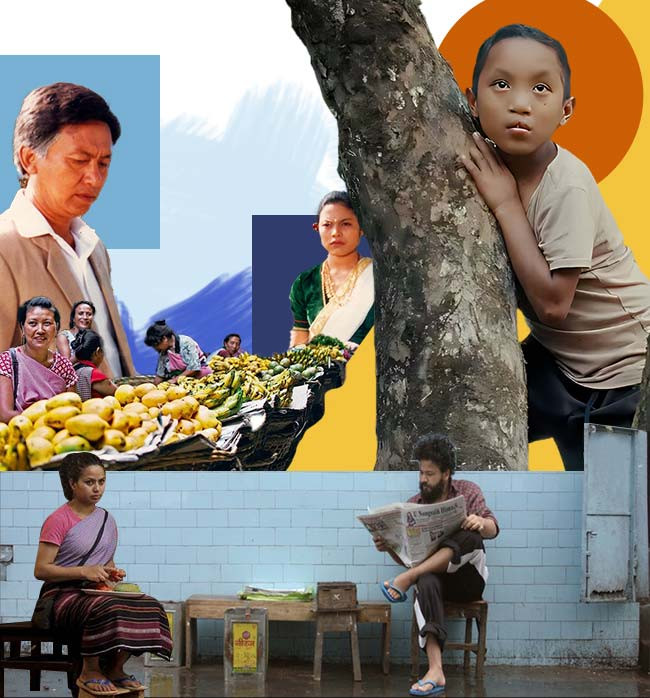
A Cinematic Sisterhood
In the past few years, Indian cinema has taken strides both in terms of commercial and critical acclaim. The birth of the ‘pan-Indian’ movie, featuring larger-than-life characters who appeal to audiences across the board, has swept the country. Added to that is the wealth of regional and independent films that are discovering audiences thanks to wide releases as well as online streaming platforms.
But at the same time, other nascent film industries have felt the pinch and are still committed to their struggle of telling great stories and promoting their heritage in a unique form. Two emerging film industries from two states in the northeast show the nature of their issues and the brilliance of their craft, which the rest of the world seems to be missing out on.
In the shadows
In northeast India, one vernacular film industry dominates over others in terms of sheer numbers: the Assamese film industry. Previously called Jollywood, it is among the oldest film industries in the country. Starting in 1935 with its first film Joymati, the Assamese film industry constantly grew in the early twentieth century.
The enshrining of Assamese as one of India’s official languages in the Constitution gave it governmental protection and funding, which allowed Assamese arts and films to continue being produced, reaching a new stage of increased production in the late 60s. This was in part because of stalwarts like Phani Sharma, Anil Choudhury, and the legendary Bhupen Hazarika.
Within these regions, where one language dominates a particular aspect of life, it tends to do so to the detriment of other dialects and languages around it. This has been the case with Bollywood, which has resulted in much smaller industries in local dialects and languages throughout the Hindi heartland. In most cases, the Hindi film industry seems to have subsumed movies with these dialects and languages.
However, that has not been the case with Jollywood. Thanks to the linguistic diversity of the northeast and the small space that these languages share, regional film industries such as those based in Manipur, Meghalaya, and Tripura blossomed in the 70s and 80s. Aided by technicians and artists who had plied their trade in Assamese cinema, these nascent film industries told pathbreaking stories from the beginning.
Speaking on the openness between the various film industries, National Award-winning film critic Utpal Borpujari explains, “There has never been any step-motherly treatment from Assamese cinema towards other smaller, regional film industries. Actors and crew have worked across state and linguistic lines. If anything, the spirit of collaboration has increased in recent years as the youth are a lot more open-minded.”
The jewel blooms
Starting in 1972, Matamgi Manipur was where Manipur cinema started. A Meitei language film, it was directed by Debkumar Bose and dealt with the diverging views of two generations. So from the first instance itself, one could see the cross-collaboration in various departments. Bose himself was Bengali and often directed Assamese films. The first Manipuri film by a Manipuri director was Sapam Nadia Chand’s Brojendragee Luhongba in 1973, in which he also starred and did the music.
In the five decades following the arrival of Manipuri cinema, it has gone from strength to strength. While the volume of releases has decreased slightly in the past few years, it remains — after Assamese cinema — the most prolific film industry in the northeast. During this time, Manipuri films have regularly won big at the National Film Awards, often outside their linguistic categories. Films from the industry have also found favour with international audiences, with Aribam Syam Sharma’s Ishanou (1991) being screened at Cannes’ Un Certain Regard section, and was recognised as a ‘World Classic’ at the 2023 Cannes Film Festival, the only Indian film to be recognised so.
Manipuri cinema has retained its penchant for meaningful stories, with films like Oneness by Priyakanta Laishram in 2023, which was hailed as Manipur’s first gay-themed film, and Romi Meitei’s Eikhoigi Yum in 2021, which won at the 69th National Film Awards and was an official selection for Jio MAMI 2022.
Borpujari elucidates on the nature of Manipuri films, “Thematically, Manipuri films are unique, and are often labours of love and passion projects. Although the commercial movies they make are heavily influenced by Bollywood.” The presence of out-and-out commercial films like Inspector Yohenba 1 and 2 (inspired by the Salman Khan-starrer Dabangg series) show that Manipuri cinema has the scope to experiment and successfully deliver different kinds of films.
Cloudy with a chance of films
In Meghalaya, things are slightly different. While the majority of Manipuri cinema makes films in the Meitei language, there’s no overarching language as such within Meghalaya, with Garo and Khasi being the two most spoken languages after Assamese in the state. The growth of Garo and Khasi films has been rather slow and laborious since the first Khasi film in 1981, Ka Synjuk Ri Ki Laiphew Syiem (The Alliance of 30 Kings). It has been only in the last fifteen years that Garo and Khasi cinema have picked up some momentum, which is down to two visionary auteurs, Pradip Kurbah for Khasi cinema, and Dominic Sangma for Garo cinema.
Kurbah, who learned the ropes in Bollywood, spent over ten years trying to get his 2014 National Award-winning science fiction film Ri: The Homeland of Uncertainty off the floor. Upon being asked about using a science fiction setting to explore state terrorism, Pradip Kurbah explained, “In Meghalaya, each filmmaker has their own style when it comes to making films. Due to the diversity of cultures as well as miscegenation, every filmmaker is unique in the way they approach the craft.”
Kurbah’s latest film, Iewduh (2019), was screened at the 2019 Busan Film Festival and received rave reviews on its portrayal of the linguistic and cultural diversity of Meghalaya and the issues associated with it.
Sangma has been single handedly responsible for bringing Garo cinema to the world. His first feature film, Ma.Ama (2018), won the Best Cinematography Award at the 22nd Shanghai Film Festival and his newest film, Rimdogittanga (Rapture), was screened at the 2023 Locarno Film Festival. An alumnus of the Satyajit Ray Film and Television Institute (SRFTI), Sangma takes a keen interest in every aspect of filmmaking, and often seeks to cast non-actors and locals in small roles.
Commenting on the community aspect of storytelling as well as the paucity of Garo films, he said, “When I set about to make Ma.Ama, I hit upon the realisation that there were no reference points when it came to Garo cinema. Sure, there were a couple of films that had been made in the 80s, but nothing major to serve as a waypoint for future storytellers and filmmakers. So whether I like it or not, I am the reference point and the pioneer here, which is why I have to look at the entirety of my filmmaking process a lot more seriously. Filmmaking in Garo Hills has to be a community effort. While funding can come from various sources, the heart of my films is rooted in the community and the cultural identity of Garo Hills.”
A Need for screens
While the northeast, not just Manipur and Meghalaya, has a treasure trove of stories and storytellers just waiting to spin their yarns, there is a chronic lack of funding when it comes to films. While early in the last decade, the OTT boom sought to source all kinds of films and became a haven for independent as well as regional filmmakers, this has changed since the pandemic.
“While earlier there was talk of having most digitally made films on OTT, regional films quickly fell out of favour. Now it has reached a point where it is difficult for even an Assamese film to secure a preferential OTT release, so what hope is there for the smaller ones? Directors need to be able to recoup their production costs at the very least, and OTT platforms are not able to offer that kind of money,” says Borpujari.
Kurbah recognises a bigger issue at hand, “The primary obstacle facing contemporary Khasi cinema, and regional cinema by extension, is the lack of cinema halls. There are only two cinema halls for Khasi films in all of Meghalaya. So while locals generally like Khasi movies irrespective of their demographic, encouraging them to come to theatres instead of sticking to OTTs and producing high quality films is crucial. The government’s initiative to establish 30 more cinema halls in the state looks to be a step in the right direction.”
These, alongside efforts from established directors as well as film critics, might just herald a new age for cinema in the northeast. As such, Kurbah and Sangma have co-founded the Kelvin CInema Festival. Recognising the latent talent in the storytelling ability of the northeast and the scarcity of film festivals and infrastructure there, the festival aims to nurture this spark. “Before joining SRFTI, I hadn’t watched any world cinema; I didn’t even know that such a cinema existed. I only watched Hindi films and Hollywood films. SRFTI opened the door to a different world… I was wasting my time on films that could have dulled my perception of life. I don’t want that to happen to young aspiring filmmakers from the region. With the Kelvin Cinema Festival, both Pradip Kurbah and I aim to bring good films from across India, introduce filmmakers from different regions and create a space to learn various aspects of filmmaking, festival strategy, distribution, etc.” Sangma explains.
So while Manipuri and Meghalayan films are earning plaudits the world over, we need to recognise and protect this unique art as well. And that starts with exploring and encouraging a different way of looking at cinema, as well as fostering a cinematic ethos that celebrates plurality and cross-cultural collaboration.
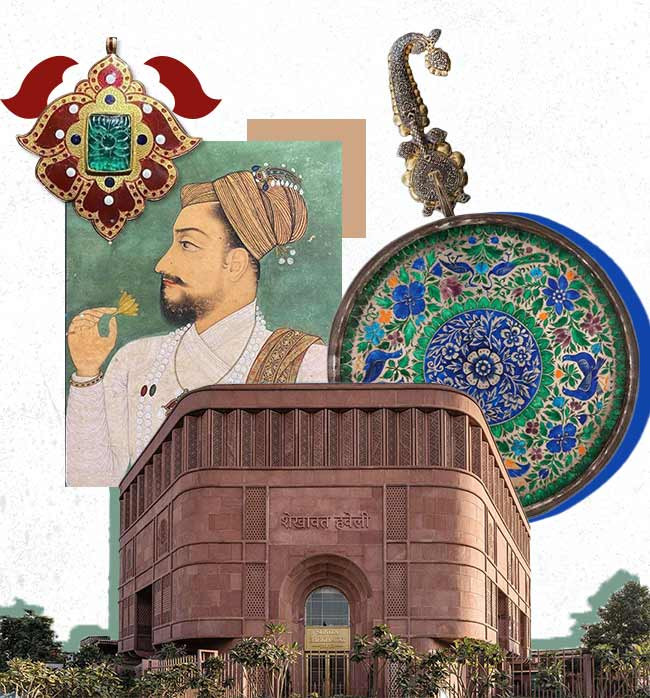
A Palace of Her Own
What is jewellery if not art that can be worn? This is especially true when it comes to Indian jewellery. A necklace or a pair of earrings can hold centuries of culture within their delicate crevices. Each style, gem, and cut tells a story of artisans, history, and people. And one extraordinary example of this is meenakari. Meenakari, also known as enamelling, is a traditional Indian art form that involves the decoration of metal surfaces, typically gold or silver, with colourful enamels.
Meenakari work often features vibrant colours, intricate designs, and sometimes incorporates motifs from nature, such as flowers, birds, and animals. Still practised in various regions of India, with centres of production in places like Jaipur, meenakari is an artform that lent itself to jewellery, blurring the line between the two.
So it is less surprising that in the bustling lanes of Jaipur, where tradition meets innovation, jewellery designer Sunita Shekhawat has carved a niche for herself with her eponymous brand. As she celebrates the 25th anniversary of her label, she adds another jewel to Jaipur’s crown with the inauguration of the Museum of Meenakari Heritage (MoMH) at the Shekhawat Haveli.
“MoMH tells the story of meenakari in India, tracing its history, genesis, and development through different epochs,” says Shekhawat, reflecting on the museum’s purpose. “It serves as an educational and cultural centre to preserve and celebrate the craft.”
A journey through time and technique
Shekhawat’s journey into the world of meenakari began with a deep-rooted passion for reviving traditional art forms and infusing them with a contemporary aesthetic. The museum, curated by renowned art historian Usha R Balakrishnan, is a testament to this vision, offering visitors a glimpse into the evolution of meenakari from its Persian origins to its flourishing in the palaces of Jaipur.
“This has been in the works for decades now. The goal was to present to the world that we still have artisans who can reproduce the same art with the same consistency, with the same material, and the same form as it was centuries ago. It’s preserving your craft and passing it onto the next generation,” Shekhawat tells us.
Inside the museum, every detail reflects a harmonious blend of tradition and modernity. From hand-painted frescoes depicting the region’s architecture to meticulously crafted reproductions of historical jewellery pieces, the museum offers an immersive experience that transcends time. But beyond that, it is also a reflection of who she is.
Carving a legacy
“The stone which I chose for the façade is from Jodhpur because I was born there and I have such fond memories of the city that I wanted to bring a little bit of Jodhpur to Jaipur. When you go to a fort, it looks very masculine, but in this building you will see a lot of femininity. They were made by the kings for other men. This is made by a queen. So there is a very feminine aspect to it,” she adds.
In fact, she believes that this is her legacy. “When people talk about being seventh or eighth generation jewellery designers, have you noticed how it’s always the men? I always ask them, ‘Where are the daughters of the family?’ With MoMH, I hope that I pass this on to my daughter — who is as much a part of this as my son. This whole endeavour was our collective labour of love.”
For Shekhawat, the museum is more than just a tribute to Jaipur’s heritage — it’s a gift to the community that has nurtured her creativity for decades. “It is truly an ode to Jaipur, a city that has given me so much,” she says. “MoMH is our way of giving back to the community.”
Preserving tradition, embracing innovation
While meenakari has clearly stood the test of time, one has to wonder about its malleability with contemporary designs. “When the Millennials who are in their thirties were in college, they were going far away from traditional ideas. But the college students now are embracing these ideas. They wear sarees and try on different jewellery. It seems that the idea of traditionalism mixing with modernism is the thing now. The colours and designs in traditional Indian jewellery are very versatile. This is perhaps why the kids are going back to their roots. It's to celebrate the past while bridging the gap between then and now,” Shekhawat tells us.
As you step into the Museum of Meenakari Heritage, you embark on a journey through centuries of craftsmanship, innovation, and artistry — all in one go. You take a journey that celebrates the past, embraces the present, and inspires the future. And that’s one of the best journeys to take.
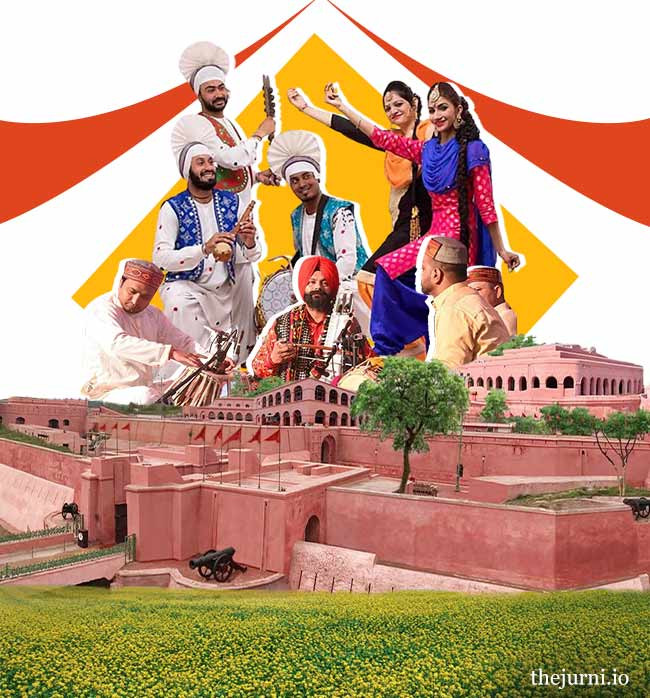
Amritsari Maan
What is the first image that comes to mind when you think of Punjab? Of course, there are the mustard fields whose glaringly yellow seeds have been ingrained in our minds since the ‘90s, thanks to Dilwale Dulhania Le Jaayenge. Yet, amidst this tapestry of sensory delights, there emerges a symbol that transcends mere landscapes — the Golden Temple.
Like how our imagination of Delhi feels lacking without at least a silhouette of the Qutub Minar in the background, or of Rajasthan without the Umaid Bhawan Palace and Hawa Mahal, it is difficult to think of Punjab without thinking about the Golden Temple. And inevitably so, this is true for Amritsar, which has long been a premier destination for spiritual tourism in India. Yet, while it maintains its spiritual significance, the city’s potential as a cultural capital is now being realised in an exciting new way.
Finding artistic expression
For generations, much like West Bengal, Punjab has nurtured a rich sense of artistic talent, from the lyrical poetry of Amrita Pritam to the soul-stirring melodies of Rafi. But while Kolkata became the de facto cultural capital of not just the state but of the country, Punjab never had the privilege of holding a designated space for creatives to thrive in, or to promote its culture at a national level. Enter: Amritsar, now emerging as a sanctuary for artists, musicians, and writers alike.
Recent events, such as the Sacred Festival at Fort Gobindgarh, unveiled a fusion of music and art that’s redefining Amritsar’s cultural fabric. With curated experiences blending poetry, heritage walks, and culinary delights, the city is resonating with a newfound artistic fervour.
Minhal Hasan, the visionary behind the Sacred Punjab Festival, encapsulates the prevailing sentiment: “Despite its global allure, Amritsar’s cultural heritage remains untapped. This festival aims to shed light on the city's rich traditions through the performing arts.”
The current vibrant energy pulsating through Amritsar has been gradually building over the past few years, particularly catalysed by the establishment of the Partition Museum. This landmark structure, situated at the heart of the city, has effectively shifted its rhythm. Adorned with artefacts, testimonials, and poignant remnants of a bygone era, the museum serves as a reminder of Punjab’s history. It has swiftly become a favourite haunt among artists, drawn to its evocative narrative.
Reflecting on this cultural resurgence, artist and curator Manisha Gera Baswani shared her sentiments, “Although my project has traversed the globe — from Lahore to the Kochi Biennale and the Ashmolean Museum in Oxford — exhibiting it in the sacred city of Amritsar felt like a homecoming.” Baswani’s poignant exhibition, Postcards From Home, a historic documentation featuring 47 artists from India and Pakistan, found a befitting spot at the Partition Museum, further cementing its status as a cultural hub.
However, this new electric vibe that Amritsar wears today has been in the making since the past few years.
A new vision
The state government is equally invested in giving the city a cultural makeover, encouraging significant collaborations between artists and institutions. These efforts have been more defined ever since the centre picked Amritsar to hold the sixth Heart of Asia ministerial conference on Afghanistan (strategically, so) and also as one of the venues for the G20 summit. One cannot help but wonder if that is where the idea of creating a ‘delegate experience’ came from.
“It is in addition to the open sessions that we have created a special segment exclusively for delegates (due to the increasing number of international conferences being organised in the city). This Delegate Package offers an experience that includes certain exclusive offerings, such as specially-curated meals, heritage tours, and priority seating,” adds Hasan.
The seven-day long Rangla Punjab Festival -– organised in Amritsar for the first time in February this year to showcase the artistic metamorphosis of the city -– is also testament to the government’s nudge for a revamp. A subsection of the festival saw acclaimed authors, poets, and intellectuals come together to explore a wide range of literature that characterise Punjab’s history.
“I feel the marketing could have been better. A lot of stakeholders were missing from the event which shouldn’t have been the case if they want to maximise their outreach,” says Niharika Arora, a content creator with border regions as her primary subject of interest.
Even the Punjab Art Initiative themed A Fine Balance was held in Amritsar for the first time last year. It had notable individuals from the city’s artistic community exhibit over 150 art installations, sculptures, paintings, and photographs, not to forget applaud-worthy performances by acclaimed vocalist Aruna Sairam and leading Hindustani classical slide guitar player Kamala Shankar, as well as Punjabi folk singer Dolly Guleria and singer-songwriter Harpreet Singh.
Cinema as a contributing factor
We know the enormous impact cinema can have on tourism. Remember what happened to Croatia’s Old Town Dubrovnik (King’s Landing) after Game of Thrones? Or to Goa after Dil Chahta Hai and Dear Zindagi? Something similar has been happening with Amritsar ever since Meghna Gulzar’s biographical film Sam Bahadur -– based on the first Indian Army officer to be promoted to the rank of Field Marshal -– generated quite the buzz last year.
The critically-acclaimed film on the former resident of Amritsar, Sam Manekshaw, had things end on a high note culturally for the sacred city, as it generated a significant interest in its rich history and heritage. Sardar Udham Singh, which was released in 2022, had a similar effect.
There are a series of factors that have led us to reimagine Amritsar as an emerging cultural hub. But its rich and layered history has always reflected the city’s love for the arts. Perhaps we are only seeing it now but Amritsar has always been ripe with the cultural capital needed for it to turn into a grand hub.
“To establish Amritsar as a cultural hub, reminiscent of its former glory, is a gradual process. The second edition of the Sacred Amritsar has sparked conversations about the city's potential to become the new cultural capital of the country,” said Hasan.
Its only shortcoming might been infrastructure. And with that being gradually taken care of, one can only imagine the ‘golden’ road that lies ahead for this historic city in this journey.
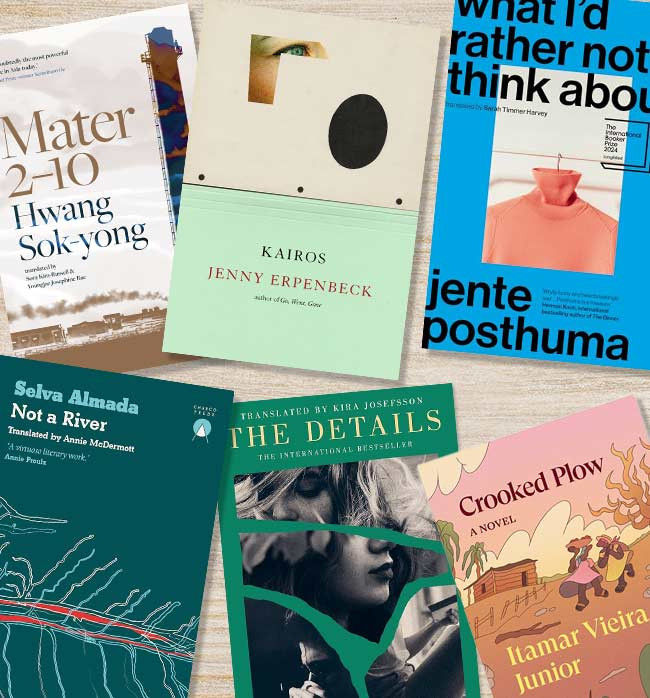
Of People and Past
The shortlist for the International Booker was released earlier this week, and while there is a diversity of languages and cultures explored among the nominees, there is also a common thread connecting all of these novels. A form that’s primarily concerned with meditating on the past, the shortlist of six adopts similar ways for examining history.
The two favourites for the award are perennial Nobel-in-waiting Jenny Erpenbeck’s Kairos and Korea’s Hwang Sok-Yong’s Mater 2-10. Both are located at crucial historical junctures, as Kairos begins with the dying days of the Cold War and the collapse of the Berlin Wall to situate a torrid love affair between a student and an older novelist. Mater 2-10, on the other hand, starts with the division of the Korean Peninsula and follows four generations of workers and their struggle.
On the other side of the nominees is debut novelist Itamar Vieira Junior’s Crooked Plow, which follows three generations of farmers in Brazil after emancipation, and much like Mater 2-10, is epic in scope, while examining history through the lens of the common folk.
From real world history, Swedish author Ia Genberg’s The Details has an unnamed narrator who is struggling through an illness and starts wallowing in the past of her relationships through a nostalgia fuelled trip into books and fictional stories. Personal tragedies set within larger historically significant periods are also the settings of Dutch writer Jente Posthuma’s What I’d Rather Not Think About, and Argentine author Selva Almada’s Not A River, which round up the shortlist.
So, which one of these will you be checking out?
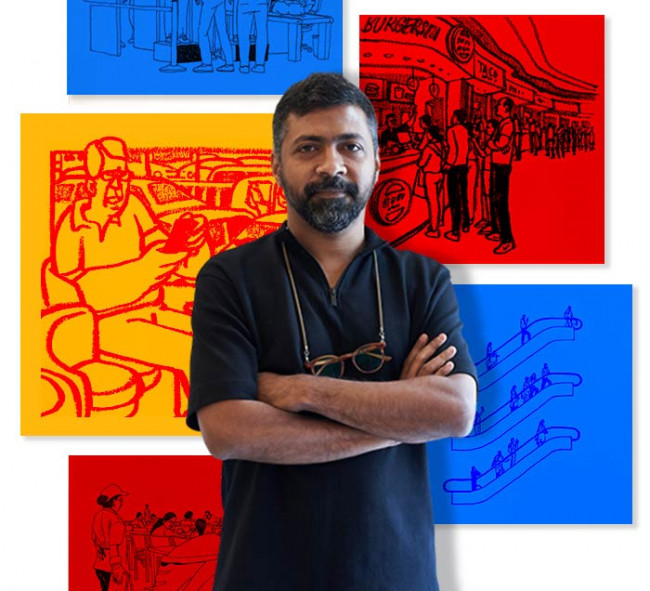
Art Will Go On
Among the bevy of artists who gathered at Art Basel Hong Kong, Mumbai-based contemporary artist Sameer Kulavoor was among the most sought after names. Championed by TARQ since 2017, the famed gallery also brought some of his most important interventions to the art extravaganza.
In the art world, Kulavoor needs no introduction. Having worked with a wide variety of media as well as concepts, his prolificity is such that you must have seen at least one of his artworks. Whether it is the street art murals at Sassoon Dock in Mumbai or Lodhi Colony in Delhi, or his famed designs for NH7 Weekender under the aegis of his studio Bombay Duck Designs, Kulavoor has been at the forefront of artistic experimentation in India. However, it is his work with TARQ Gallery that examines how urban scapes function that is making waves around the world.
TARQ’s presentation at Art Basel Hong Kong built upon the themes explored in Sameer’s 2023 solo show, Edifice Complex. In this body of work, he specifically focuses on the hyper-development that is prevalent in megacities like Mumbai. The animated spirit of the city and its people transfigure into muted, yet lively forms that refer immediately to its architecture and geography. Central to the display are two large-scale drawn Timelapses (2022), a series of sequential drawings that not only provide a unique perspective on the incessant, transient nature of urban structures, but also highlight Kulavoor’s refined understanding of colour and materiality.
The Jurni sat with him for a chat after Art Basel about his work, interests, and the cityscape.
As an artist who has worked across mediums ranging from music videos to art prints and even public art, what is your process for choosing which medium a certain concept will work? Does the concept for your artwork arrive after the choice of medium? Or is it more concept first and medium second?
SK: Medium is definitely related to concept as well as context. Most often the concept comes first. Having said that, there is no definite formula or process. The studio and easy access to resources in the city allow me to experiment with new mediums and materials and sometimes change in medium also leads to new ideas.
One of your central preoccupations is spatial representation and interpretation. What do you think is a feature unique to Indian cities and culture that allows for spaces of improvisation that are outside the purview of urban planning and authorities? How do you intend on reflecting this culture in your practice?
SK: I am currently interested in the relationship between the human condition and built spaces. In a way structures and spaces are a manifestation of the human condition and of our needs and aspirations. So one can really read into one's surroundings and identify patterns by looking at it. Cities in the eastern part of the world feel relatively denser than those in the west. There are several reasons –- the difference in climate and topography, culture, religion, traditions, the way human relationships and families work, socio-economic conditions, political conditions, and so on. There are several similarities as well –- gentrification is a hyper-local phenomenon but can be seen happening globally. The Internet and the dissemination of imagery has triggered aspirations, thus inspiring very similar looking copy-paste architecture and infrastructure projects.
You have worked with St+art at Sassoon Dock as well as Lodhi Colony, two very different spaces in terms of their footfall and gentrification (in case of Lodhi Colony). How did you approach either space when it came to creating public art? Was there a difference?
SK: Both were essentially different kinds of projects with unique settings –- I was offered a building facade in Lodhi Colony in 2018 for a mural Social Media Friendly Plants whereas at Sassoon Dock 2023 we had floor space that allowed me to create an installation called Metromorphosis.
Back in 2018, I was creating a work about how our devices and algorithms have silently begun to affect our physical spaces. The mural specifically was about the proliferation of certain low-maintenance visually-appealing ‘photogenic’ plants in homes, cafes, work spaces, etc. and eventually back on everyone's social media. I treated the building facade almost like a pleasant decorative wallpaper.
Metromorphosis in 2023 was a monumental miniature installation about the phenomenon of regeneration, adaptation, and evolution of urban centres and metropolises. The mega-city of Mumbai was built on the lands of the Kolis (fishing communities) –- the original inhabitants. Sassoon Dock itself is a fishing dock and so it felt like an appropriate space to tell the story of the metropolis.
One of the more striking aspects of your work, especially when it comes to representing the urban, are your choice of materials and hues. For example, your recent experiments with using cement boards as canvas. How did you strike upon such a unique choice?
SK: Particle cement board is a super hard and heavy surface to paint/draw on and by accident I tried solidified paint markers on it a few years ago. The markers felt like butter on a rough pan and the lines retained the rough edge once they dried. When I was working on the pieces (that were showcased at Art Basel Hong Kong), I remembered that experience and decided to use the boards –- but I used second hand ones that already came with scratches, marks, and rough edges.
You have long been associated with TARQ gallery, who also took your work to Art Basel Hong Kong. How important do you think galleries and the networks they engender for emerging artists are? And as someone who has been involved with galleries for over ten years, have you noticed a change in the kind of artists and creators that are being championed by them?
SK: It has been a pleasure working with Hena (Kapadia, Founder of TARQ) and the team at TARQ because they are thorough professionals and friends at the same time. Having them helped me focus entirely on what I love doing without being bothered about logistics of all kinds –- accounts, archiving, documentation, promotion, applications of all kinds, writing/text, etc. Having a good gallery representing you makes a part of your life easier. There are definitely some trends with gallery representation in the art world but as an artist you have just got to focus and do your thing.
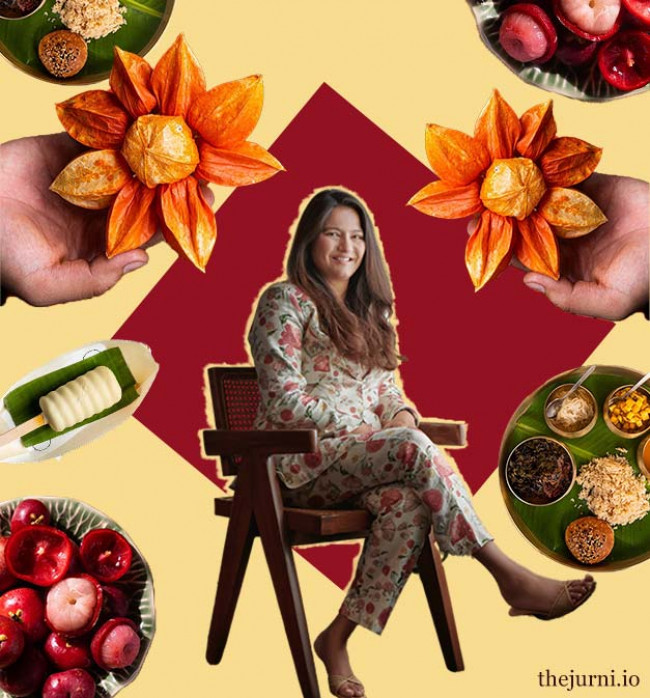
An Insatiable Appetite
If you happen to run into Aditi Dugar, whether it's at her famous restaurant Masque, a fun gathering, or even a work event, you're guaranteed to get a warm welcome. She'll greet you with a big smile and probably a friendly hug too. With more than ten years in the food scene, it's clear she knows how to make people feel at home. But here's the thing – I think it's not just about her skills; it's her real passion for food that shines through in every interaction.
When it comes to Aditi's professional journey, her accomplishments speak volumes. From the establishment of Sage & Saffron, her boutique catering and fine-dining service in 2012, to the creation of Masque in 2016, which stands as a beacon of innovation, celebrating India's rich bounty of produce through an immersive tasting menu. In fact, Masque claimed The Best Restaurant in India 2024 honour by Asia’s 50 Best Restaurant 2024.
While there's already plenty written about her impressive ventures, I decided to take Aditi on a nostalgic journey down memory lane. Sometimes, it's not about adding to someone's professional accolades; it's about cherishing the journey and the memories that shaped them along the way. And in that shared moment of reflection, we found a deeper connection beyond the titles and achievements—a bond forged through stories and shared experiences.
Rewind
Aditi had quite the lively upbringing in Mumbai, growing up in a Marwari-Jain household filled with relatives of all ages. The phone in her house served as more than just a communication device — it was like a catering menu, constantly ringing with calls from various family members, each with their own tastes and preferences. “It was a task to cater to everyone's needs, from my cousins to my grandparents, who had their own dietary restrictions like avoiding certain vegetables and following Jain principles,” she says, adding that living in such a large family was both chaotic and enriching, with shared meals and shared memories filling her home with warmth and love.
Aditi admits that her mother played a significant role in shaping her culinary experiences, bringing global influences into their home despite being rooted in traditional Indian cuisine. “It's fascinating how different cultural backgrounds can blend together to create a unique culinary tapestry within a family,” she says, adding: “My grandma was really into using local produce. We're from a small town called Bidasar in Rajasthan. Everything there was connected to the land, you know… grown with care. I used to love visiting my grandma's house, where she'd always have delicious homemade dishes for us to enjoy. We'd eat fresh roti and other delicacies she made with love. After the Partition, some of my grandpa’s siblings moved to the UK, so my mom's side of the family was influenced by global cooking. This influenced what my mom cooked for us.”
It was her mother’s passion for cooking, and her willingness to impart that knowledge to others around her, that inspired Aditi to start Sage & Saffron. “My mom used to hold cooking classes at home and her innovative recipes earned her quite a reputation. Even high society women were eager to learn from her. Even when we would travel to visit dad's brother who lived in Bangkok, Thailand, around a decade ago, where finding good vegetarian food was challenging. So one summer, we went there and took classes with a street food specialist to learn more about cooking. My mom was always interested in cooking wherever she travelled and I often joined her in classes. Eventually, I started cooking in London, too. When I returned, I began helping her with professional cooking classes. That's when the idea of starting my own catering business came up,” says Aditi.
Despite a successful stint in finance, Aditi decided to focus on cooking full-time. “Even after completing my MBA, I realised my passion lay in being a great cook and a mom. I couldn't sit still; I've always been a hustler, especially growing up in a big family with many cousins,” she adds.
Aditi’s mother wasn't really into marketing herself or her business. Even when clients asked her to cater events, she would often say no. But one day, during a conversation, Aditi suggested that she should give it a try. Surprisingly, she agreed and that changed everything. She realised how much people appreciated her food when it was freshly prepared and served, rather than just packaged and sent out. “That feeling of hospitality and appreciation excited me. I told my mom that she could focus on cooking while I handled the business side of things. So, we started our catering business together, with me taking care of everything from marketing to running events. I enjoyed the hustle, going to the market myself to pick out ingredients and flowers,” she says.
Being a vegetarian has definitely influenced how Aditi cooks for her children. In the past, vegetarian options in restaurants were often limited to side dishes or fried foods. Even at home, she sometimes found it challenging to find a variety of vegetarian dishes that were as exciting as restaurant offerings.
“But things have changed a lot in the past five years. Chefs are now more creative with vegetable-based ingredients, making dining out a much better experience for vegetarians like me. It's not like it used to be five or six years ago when vegetarian options felt like an afterthought,” she says.
Complexity of flavours
Growing up, Aditi was lucky to have access to a wide variety of cuisines, both regional and global, thanks to her Marwari background and well-travelled friends. “This diversity has influenced how I cook for my own family now. I make everything from Japanese to Mexican dishes at home.” And she admits that she taps into the rich culinary heritage of Rajasthan now and again to keep her childhood memories alive. Recently, the Masque team went on a trail and cooked their version of a khad khargosh (rabbit curry), which was cooked underground, wrapped in a sack, and then covered with ash.
Inspired by this, Masque also created a vegetarian version of the dish with sweet potatoes. “Rajasthani cuisine is known for its rich and flavourful dishes, often using dried berries and various spices. Since fresh vegetables are scarce during the winter, yoghurt-based preparations are common, along with a variety of greens. Overall, the response to our khad khargosh was fantastic. People were amazed by the flavours and presentation, and it was a great way to showcase the richness of Rajasthani cuisine,” she says.
Constant reinvention
Given her penchant for trying out new flavours, Aditi is always looking to add something new to the menu at Maque. “I don't mean to sound ungrateful, but even we can get bored sometimes. After eight years, our restaurant has reached a level of maturity where we find ourselves feeling tired of the same old routine. It's been three months, and our menu hasn't changed, yet the dining room is full every night. It's like we've created our own little bubble in our heads. While our customers are happy with the familiar dishes, it can feel a bit repetitive for us. Sure, it's great that so many people keep coming back for the same menu, which we've tweaked slightly for each season or event. But in my mind, I'm always thinking about the creative aspect of running a restaurant,” she says.
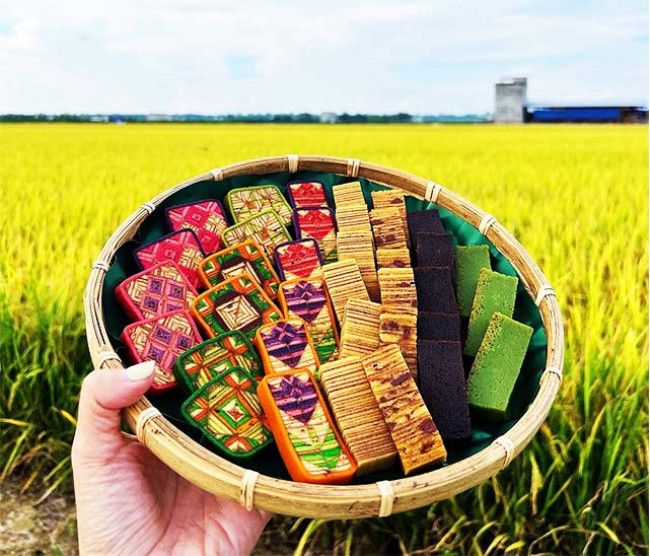
A Thousand Cakes
Kek lapis is a dessert you have to try, especially during this time of the year. Combining detailed patterns with an equally delicious flavour, it is a Malaysian staple when it comes to celebrations. Originally making its way from Sarawak, which got its version from the Dutch, this take on a layer cake has evolved into an artform, with skilled bakers focusing on creating intricate designs. Despite being time-consuming to make, it is worth the effort. So when are you travelling to try this delectable dessert?
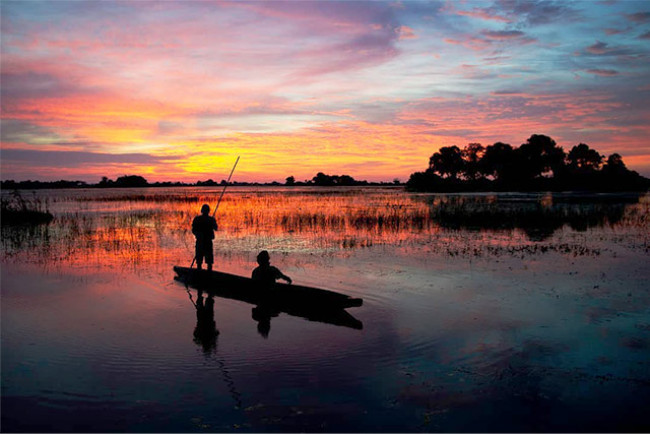
To New Shores
The mokoro is the perfect place to witness South Africa’s lush canvas from, particularly in the Okavango Delta in Botswana. The stillness of these traditional canoes allow you to create an intimate connection with nature, immersing you in the sights and sounds of the Delta.
As compared to other spots in Botswana, Okavango remains largely untouched, interrupted only by the meek mokoros. For a long time, being a ‘poler’ or mokoro guide was considered to be a man’s job. This is because taking people on a tour on dug-out canoes along the glassy delta waters required a considerable amount of balance and physical strength.
But mokoro safaris are undergoing an interesting shift. The challenge is now also taken up by female safari guides, who want to share the knowledge and culture of their land with tourists. Okavango Delta is one such place where women are getting to explore this passion by turning into mokoro guides.
For many of these women, mokoro safari is a two-way street, helping them to not only create a fresh means of income but by also offering them something unique. The stillness helps them use all their five senses without any disturbance, transporting them into a meditative state and leaving them with indelible memories of its tranquillity.
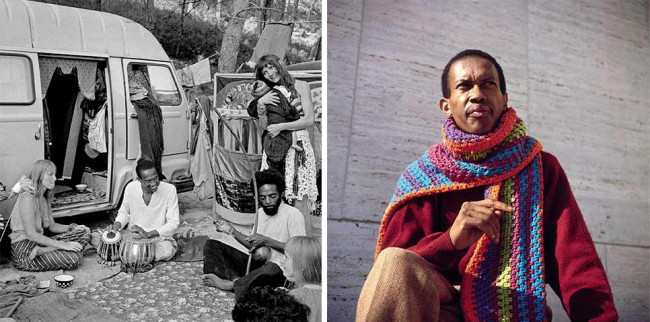
All That Jazz
What do you get when you mix a versatile sound with jazz and just a dash of Indian ragas? That’s the music of jazz virtuoso Don Cherry, known for his adventurous spirit that left an indelible mark on the genre with his eclectic musical explorations.
If you’re looking to familiarise yourself with Cherry’s work, maybe give Malkauns a shot. The song is like a magical 14-minute trailer into some of his incredible work. Another great listen is Utopia and Visions. Cherry was deeply influenced by Brazil, India, Turkey, and South Africa, as well as American jazz. And this song seems to capture it exactly. Or, you could start your day today with Luna Turca. Musician Nailah Hunter, says it best when she says, “It feels both sunlit and sombre at once — a contrast that I’ve always found to be enticing.”
Cherry’s style was characterised by its fluidity and openness, inviting you on a journey of sonic exploration. Whether he was playing the trumpet, flute, or experimenting with various percussion instruments, Cherry’s music always exuded joy and playfulness. Tracks like Malkauns and Summer House Sessions Side A capture this spirit with their infectious rhythms and carefree vibe.
Cherry’s legacy continues to inspire musicians and listeners alike, reminding us of the boundless possibilities of artistic expression. So next time you’re in the mood for some adventurous jazz, don’t forget to add Don Cherry to your playlist and embark on a musical journey like no other.
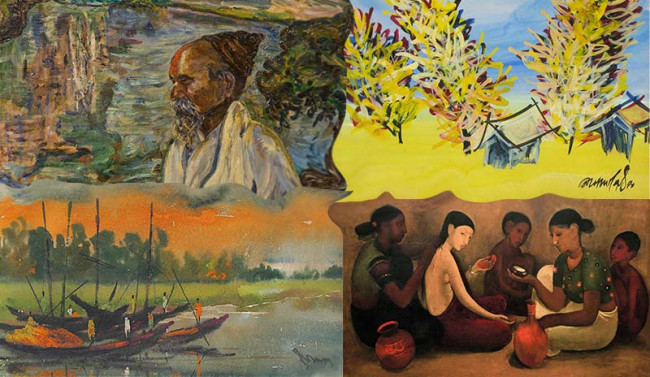
Art Attack
Indian art has been on an upward trajectory in the past two years. New venues such as the NMACC, Hampi Art Labs, as well as The Brij in Delhi have opened up to increase the number of available spaces for artists and the arts. At the same time, legendary Indian artists are reaching new heights the world over. Last year, Amrita Sher-Gil’s The Story Teller broke the record for an Indian artwork, selling for a whopping INR 62 crs.
With all these developments in the Indian scene, it seems to be just the time to explore and promote a new dimension in contemporary art, whether it is revisiting old masterpieces, or reinventing traditional art forms.
Old is gold
While Sher-Gil is extremely well known even outside art circles, there is a panoply of Indian artists who seem to finally be getting their dues and recognition. Rumale Chennabasaviah, one of Karnataka’s greatest modern artists (also known as India’s Van Gogh for his striking naturescapes) painted over 600 artworks in his prolific career. NGMA in Mumbai is presenting a retrospective on the artist, featuring over 80 of his best works.
Meanwhile, one of the founders of the famed Calcutta Group, Gopal Ghose, is being celebrated by DAG 2 in Mumbai through a retrospective exhibition that explores the breadth of his oeuvre. Known for his striking use of watercolours, this is an unmissable look at the evolution of contemporary Indian art. In his hometown of Calcutta, Ganesh Haloi is finally getting his first large-scale exhibition at the Birla Academy of Art & Culture, exploring a monumental 60-year-old career.
The new look
Mixing the rich storytelling traditions of India, and traditional arts, along with a smattering of eclectic styles like hand cut paper, Debjani Bhardwaj is creating an fascinating showcase that invites the audience to engage with the art as well as participate in creating it at the Threshold Art Gallery in Delhi.
At Snowball Studios in Mumbai, Milaaya Art Foundation aims to revive the art of embroidery in a modern way. By training on artworks by famed artists, the exhibition has artisans use varied embroidering techniques to create different versions of the same artwork, thereby highlighting the uniqueness of each technique.
So, where will you be headed this weekend?
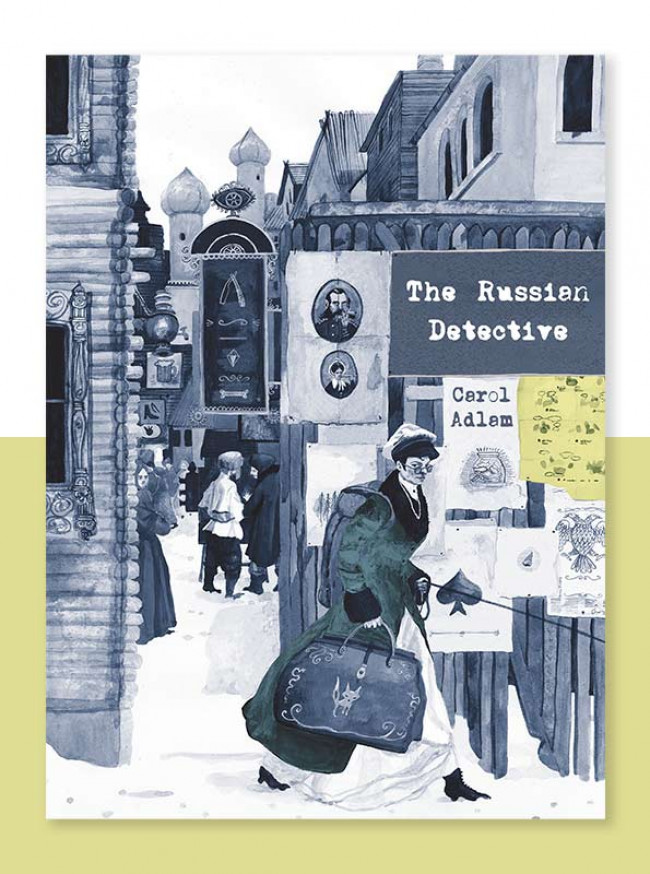
True Detective
If you couldn’t get enough of Sherlock Holmes or have ever wished to get a detailed and engaging visual account of Dostoyevsky or Chekhov’s crime stories, The Russian Detective by Carol Adlam may be right up your alley. The graphic novel not only captivates you with its stunning, evocative tales, but has meticulously carved out characters who take you on a nail-biting ride.
The book is part of Adlam’s Lost Detective Project which draws on the work of crime fiction writers who have been long-forgotten. Most of those are contemporaries of Dostoyevsky. Through her complex and elegant narrative, Adlam has endeavoured to bring to life not just the lost legacies of early crime fiction, but also the first women journalists and detectives.
One of the novel’s protagonists is journalist-detective Charlotta Ivanovna who is loosely based on America’s first female detective Kate Warne (one of Warne’s projects was to protect Abraham Lincoln from assassination). Then there is Charlie Fox, a stunt journalist, thief, magician, and a liar, who reluctantly returns to her hometown to investigate a murder. The book also borrows from the names of famous characters (there’s a Mrs Karenina as well).
This is the sixth graphic novel by the deft caricaturist who is known for turning her narratives into an almost “museum-like…luxuriant historical album.” The book could be a great way to catch a whiff of her work.

The Finest Time
Most holiday hotspots have a season associated with them, outside of which, while there’s likely to be less crowds, will also end up being a sub-optimal experience. But what if there was a place you could visit anytime, and it would be amazing? Not just that, every season will bring a different activity to enthral you. Sounds too good to be true?
Welcome to Churchill, then. Located on the western coast of the Hudson Bay, this remote Canadian town has been inhabited for over two thousand years. But while its local culture and history is a popular topic, its natural wonders are even more amazing.
If you arrive in autumn, you can see polar bears up close. This is slightly before the formation of sea ice, which allows the bears to hunt. So you can also find polar bears roaming around the coast, sometimes feeling for ice.
However, if you decide to venture into Churchill in winters, it becomes one of the best spots to view the ultimate theatre in the sky, the Northern Lights. The place also turns into a winter wonderland of sorts, with snow covering the entire town in a thick blanket.
If you thought summers would be a bust here, think again, for Hudson Bay becomes a hunting and breeding ground for belugas. The river estuary is among the best places to see these playful creatures.
So when are you heading to this place for all seasons?
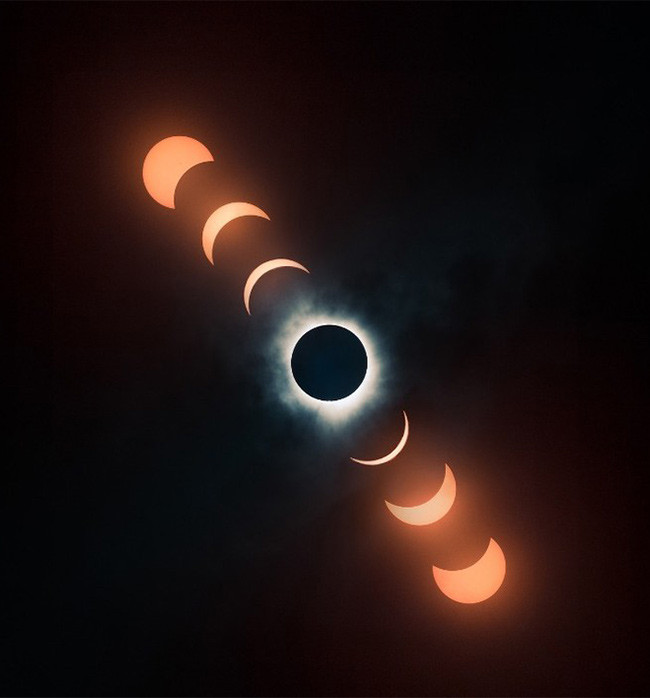
A Little Light
Hot on the heels of the complete eclipse that captivated the world, a new generation of umbraphiles has emerged. Over a week later, and people still don’t seem to be over the magical phenomenon.
It, therefore, isn’t surprising that planning for the next few eclipses have already begun. With three of them happening in the next four years, this couldn’t be a better time to plan your next eclipse exploration.
The next total eclipse is scheduled for 2026, tracing a path that starts from the North Pole, and going all the way to the Mediterranean before dissipating. It will ensure brilliant as well as varied viewing spots, such as the North Atlantic, the fjords of Iceland, and the island of Mallorca.
The eclipse will originate in the Indian Ocean in 2027, and the phenomenon will move westwards, passing through eastern Africa and Egypt, which will be the best place, as well as the most magical one to see the skies since the path of the eclipse is in line with Giza, the site of the famed pyramids.
So, when will you start planning for your eclipse adventure?
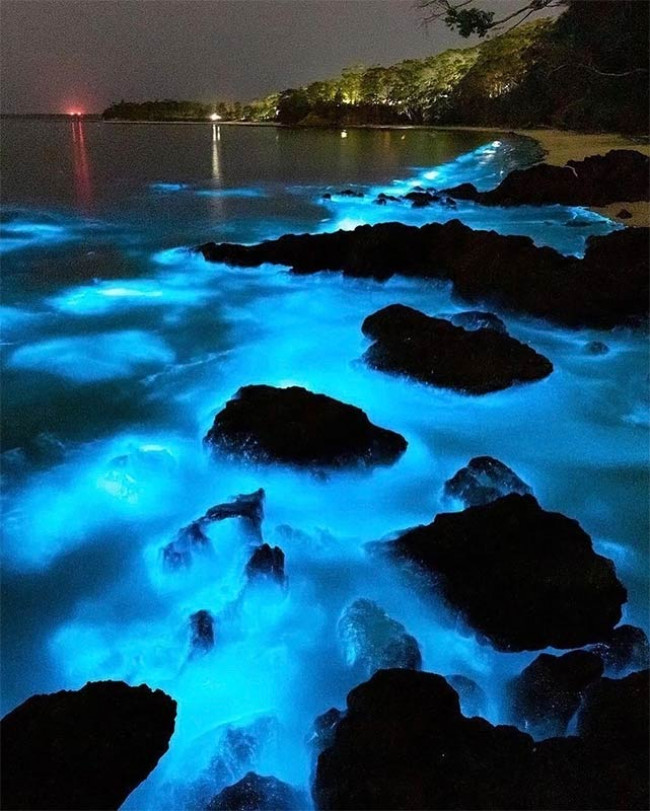
Shining in the Setting Sun
You must be familiar with the famous island in the Maldives that exhibits brilliant bioluminescence that turns its beaches into fields of blue shining stars. It is one of the features of the island that attracts such a huge number of tourists to the country every year.
But what if you got to know that this feature is not specific to one island, or even the Maldives? The bioluminescence can be attributed to specific species of plankton that inhabit the Indian Ocean. Plankton are microscopic sea creatures that lie somewhere between plants and animals. They float about on ocean currents and are sustenance for smaller fishes and animal species of the sea.
The chemical reaction that causes them to glow is caused by disturbance due to strong ocean waves, which results in a chemical reaction that seeks to protect the plankton from perishing in the sea. So while the islands of north Maldives went viral thanks to their pictures featuring the bioluminescent plankton washing up at the beach, the phenomenon can also be witnessed in Lakshadweep, or even the Seychelles.
But the greatest secret behind this enchanting phenomenon is the fact that while the images of the beaches have captured all the eyeballs, the best place to see the magic is underwater. And thanks to night snorkelling, travellers get to witness scenes that no photography can do justice to.
So what are you waiting for, head on over south, for the best time to see the magic of nature is between April and October.

Dream Away
The concept of dreams has given sleepless nights to many, and has long captured the public imagination through cult films like Waking Life, The Matrix, Inception and the underrated series The OA.
While there still hasn’t been a concrete answer to why we dream, recent studies have shown they can help reduce symptoms of anxiety and increase creativity and enhance learning. Taking from this, a hotel in London’s Kimpton Fitzroy has curated a ‘room to dream’ experience. It is a world-first initiative that has been created to help people experience lucid dreaming.
So how does it really work?
Through a VR set. We know that there’s been a boom of AR/VR in the hospitality sector for virtual tours and for people to partake in immersive storytelling. This experience just takes it up a notch where you are able to enter a hypnagogic state without being hypnotised. The process can help people control their dreams and face situations that cause them anxiety, reducing it in their waking lives.
“In the same way that a hypnotherapist takes a strand of the conscious mind down into the subconscious and implants a changed way of being, the same is possible in a lucid dream,” Charlie Morley, a lucid dreaming researcher and the creator of the experience told CN Traveller.
Lucid dreaming is going mainstream
Especially as part of sleep tourism. With more people looking towards vacations as an escape from their daily lives and as an opportunity to get better quality sleep, this comes as an effort to accommodate that need.
Several hotels around the world are capitalising on this trend by creating meditation pods and purple rooms. But Kimpton Fitzroy is the first to introduce the concept of achieving consciousness during sleep. Guests are provided with a calming tea infused with a few drops of mugwort tonic, known to induce lucid dreaming and viola! You are in a waking dream in a matter of minutes. Would you give this unique holiday a shot?
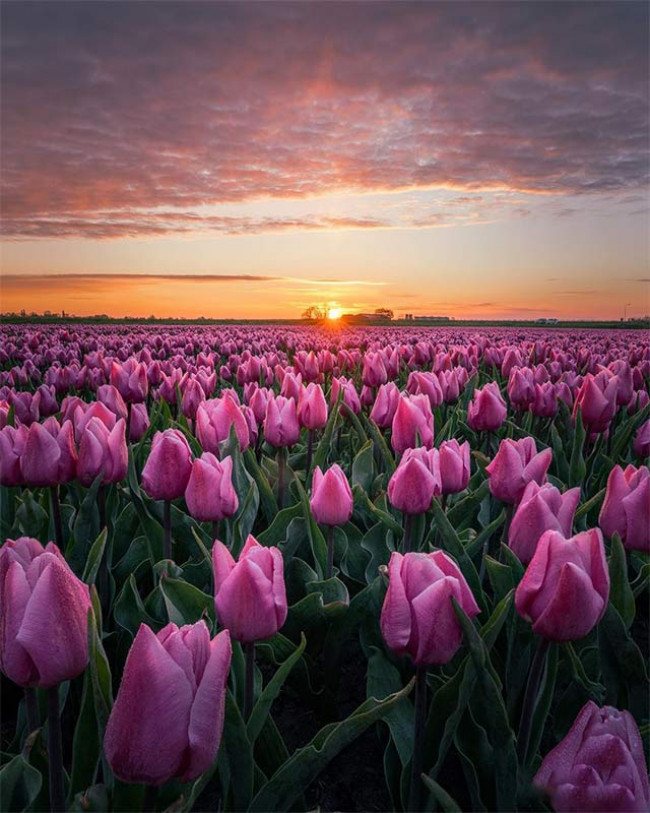
Over the Garden Wall
Even if you haven’t heard of Keukenhof, you must have seen either photographs or enchanting videos of it. The capital of Netherlands’ tulip dominion, the famed botanical garden was established in 1949, and has over seven million tulip bulbs blooming every spring. Nestled in the historic grounds of Castle Keukenhof, this place has to be on your travel itinerary even if you’re just spending a short day in the Netherlands.
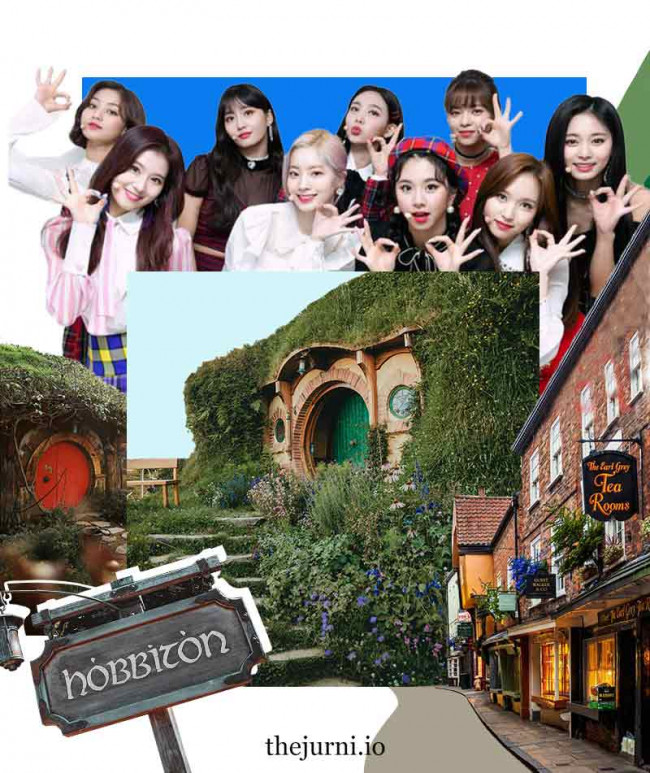
Those who Wander
It wouldn’t be out of the realm of fantasy if on your trip, you also decide to visit a spot from your favourite fictional offering. Visiting King’s Cross while in London is a given if you’ve partaken in the story of the world’s most famous boy wizard. Or perhaps visiting the Shire while in New Zealand. But more than just one or two stops, people are now starting to curate entire trips around their love for their favourite cultural creations, whether it’s music, movies, or books. This is the era of ‘fandom travel’.
The Boy Who Tripped
It’s been almost two decades since the Battle of Hogwarts, but many (while still waiting for their letters) can’t seem to get go of it. Beyond platform nine-three-quarters, there are also places that just stage as Diagon Alley and see a huge footfall. Oh, and you can get some butterbeer and Defence Against the Dark Arts literature while you’re there.
Lord of the Rings is one of the main reasons that brings travellers to New Zealand, especially to check out Hobbiton. In fact, the movie trilogy has boosted the country’s tourism to the extent that nearly one in five visitors cite the book series as their reason for visiting. Meanwhile, Dubrovnik has claimed Game of Thrones as its own, with travel itineraries organised around the filming of the series.
For the culture
But out of all the countries, it seems like South Korea has managed to perfect the art of fandom travel. It has recently come up with the ‘Hallyu visa’, which allows people to work with performative arts for up to two years.
South Korea has recognised the cultural currency it holds, with K-Pop and K-Dramas not just creating abiding fandoms, but also inspiring the fans to be a part of the growth of these sectors, thereby creating a feedback loop that helps the growth of Korean arts. With all these packages abound, which place will you head to first?
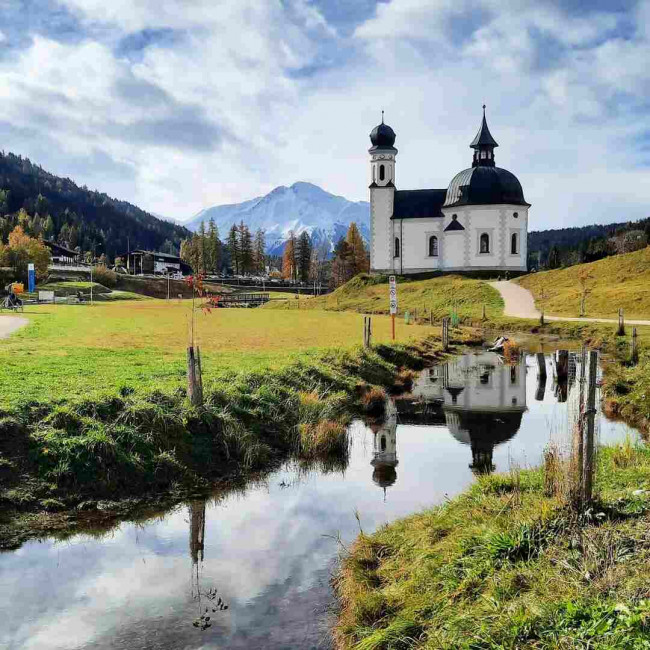
I See(feld) You
Seefeld, nestled in Austria, offers nearly everything one could ask for from an exceptional holiday. From breathtaking landscapes to pristine waters and a vibrant cultural scene, it caters to diverse preferences. Moreover, it serves as a shining example of sustainable tourism amidst the awe-inspiring Alpine peaks. Whether you’re an adventure enthusiast craving adrenaline or looking for a tranquil escape, Seefeld accommodates all types of travellers. With a survey revealing that 87 percent of Indians prioritise sustainable travel, it underscores the global trend towards mindful tourism. If you are looking for your next environmentally conscious adventure, Seefeld may just be the place for you.
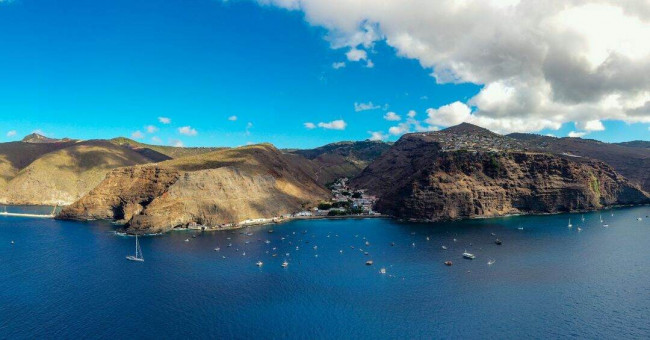
Edge of The World
One of the most remote places on the planet just opened up for you. St. Helena, nestled in the South Atlantic Ocean, remained largely untouched due to its extreme remoteness until very recently. The island has a population of just over 4000 ‘Saints’ (as residents are called) and is incredible for you if adventure is what you seek. But there is more — you can also explore its rich history, warm locals, and unique natural wonders. Oh, and there is a 200 year-old tortoise named Jonathan to befriend there too.
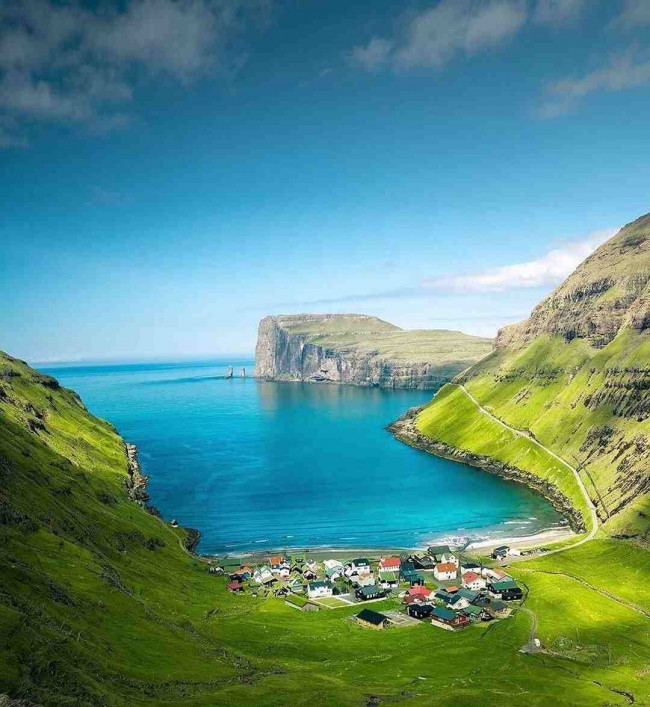
The Sound of Home
Imagine that you’re relaxing in a cosy house in Faroe Islands. Gradually, people start taking seats in a circle and before you know it, the room is filled with melodies and conversations. With hospitality abound, you are ensconced in the warmth of communal harmony. It’s time for Hoyma.
For one night every year, the people of Sydrugota in Faroe Islands sit down with their loved ones to enjoy intimate recitals. Hoyma usually takes place in the older houses of the town. Everyone (including you) is welcome and is encouraged to take part.
The tradition of Hoyma is over 500 years old and is not limited to Faroe Islands but takes place in pockets of the North Sea. It started during Danish rule when the Faroese way of living had to move underground. Hoyma was their attempt to retain their culture and keep it alive.
Owing to this tradition, the Hoyma concert series was started as part of the G Festival which is slated to take place in July. Will you be going?
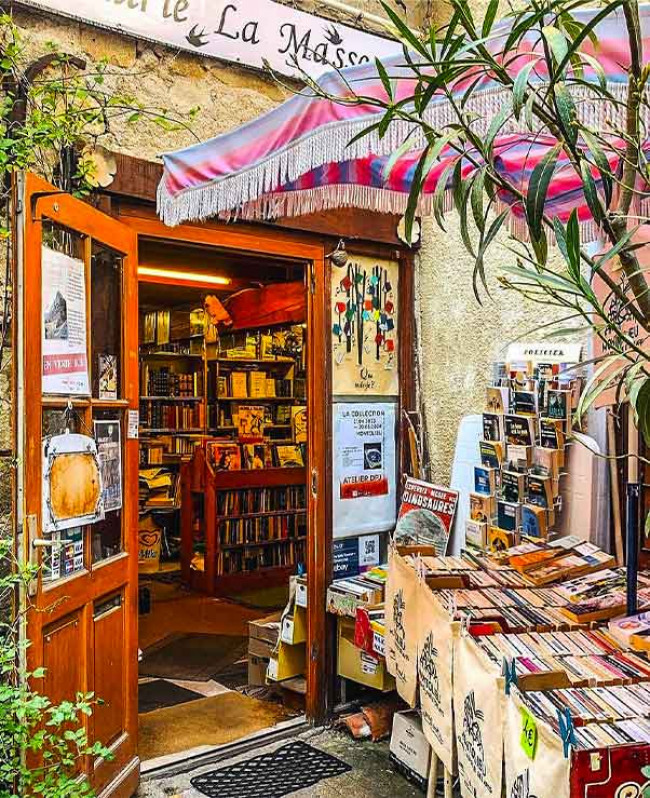
For the Love of Bibliosmia
Did you know there are some destinations dedicated solely to books? The first book town – Hay-on-Wye in Wales – came into existence in 1961, after Richard Booth, an antiquarian and academic, decided to create a place for people to read and indulge in the magical scent of old books. Since then, about a dozen book towns have sprawled up across the world.
And perhaps none is as idyllic as this quaint village nestled in France. Montolieu is a unique literary haven. While it houses roughly 800 people, it has 15 independent used bookstores. Outside each of these, you can see cobblestone streets fill every nook and cranny. And when you do step out, you can find yourself in one of its many cosy cafes. Adorned with local art and artisanal bakes, this village has everything you need for a book trip.
Though March is a great time for a visit, it is best to plan your trip around Easter, when Montolieu invites bookworms with a massive Easter weekend book market. Pro tip: it is best to carry enough currency on your trip to Montolieu as it doesn’t have any ATMs.
Despite what it sounds like now, Montolieu wasn’t always meant to be a book village. In the 80s, a bookbinder wanted to turn the place into a conservatory of bookmaking. But you know readers tend to find a way. And so, we got something equally magical. Who would you take on this literary adventure with you?
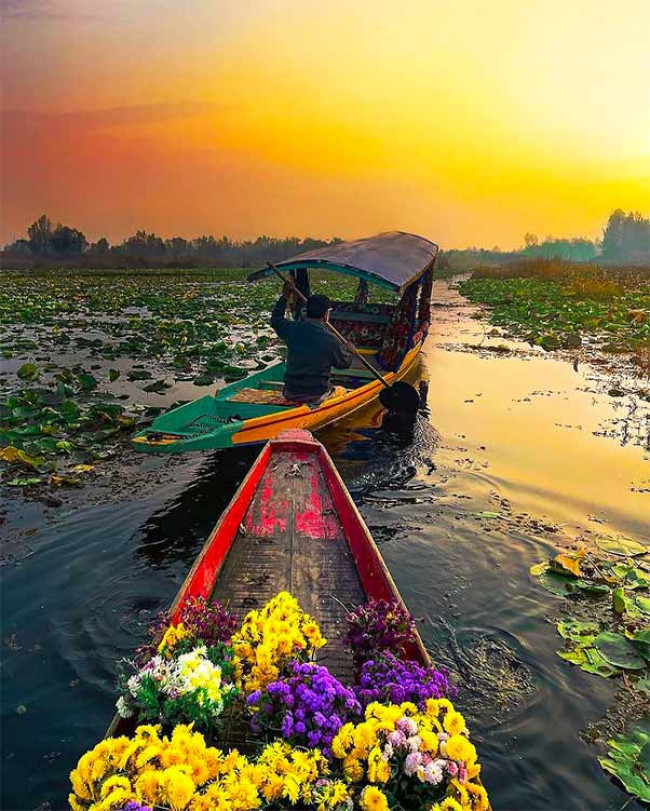
Off the Beaten Path
India’s travel report from 2023 is out and it is as diverse as you’d expect. Goa, Mumbai, Delhi, and Srinagar retain their nationwide allure. But tier two cities like Pune and Patna have also captivated explorers. On the other hand, spiritual odysseys to Varanasi seem to be on the rise. City-specific preferences reveal Mumbai’s love for Goa and Delhi’s penchant for Bengaluru. But that’s not all — Srinagar and Guwahati were among the most searched travel destinations in India.
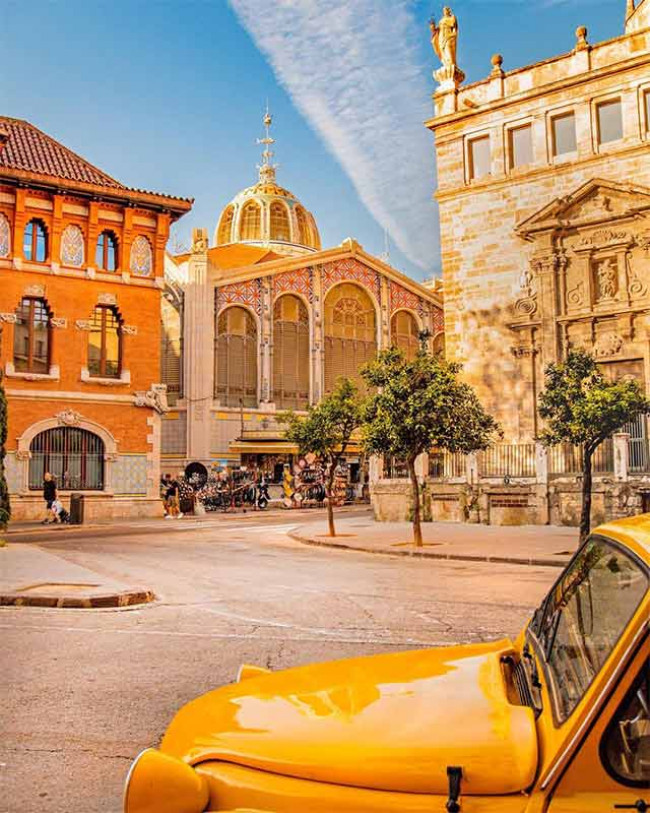
Of Greens and Oranges
What comes to your mind when you think of Valencia? Is it the breathtaking beaches? The juicy oranges? Or even football? Whatever you might think of, there’s now an even bigger reason to visit it. Valencia’s green cover has been lauded by the EU and it has been bequeathed the title of Europe’s Green Capital. With all these cultural changes and this prestige tag, could you have any more excuses to visit sunny Valencia?

PhD in Anthropology, Columbia University

Musician and Actor

Restaurateur

Lawyer

Accessories Designer

Singer and songwriter